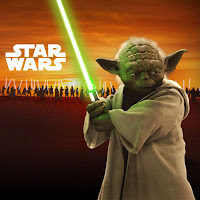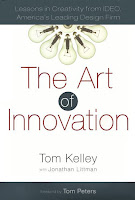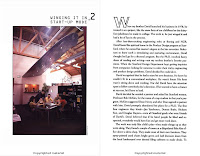


So let's go ahead and get one thing out of the way.
Episode 1: The Phantom Menace was a pretty good, fun film. Jar Jar aside, the film simply couldn't live up to 25 years of eager anticipation. Likewise, is has been said that
Episode 2: Attack of the Clones features flat acting and uninspired dialogue. In fact, some have been so bold as to claim the film is all about the special effects!
Well, the acting was a little flat and the dialogue was a little uninspired. Take Harrison Ford out of any of the previous trilogy and you'd get the same result (an acting prodigy Mark Hamill was not). And, well, it is all about the special effects. It always has been. Giant space slugs, Imperial walkers, and lightsabres...oh yeah.
What
Episode 2 – the second prequel and fifth Star Wars film to date – gives us is a fun and delightful space epic describing the height of Anakin Skywalker's Jedi career and his first missteps down the path of the Dark Side. What the film also delivers is a most unexpected reaction: We root for the bad guys.
I was born two months before the release of
Star Wars (now commonly called,
Episode IV: A New Hope). My father and I raced all over Charlotte and Atlanta to collect the complete trilogy once we got a VCR. Now that I have a DVD player, I suffer the greatest frustration at Lucasfilm's hesitation to release the original trilogy on disc. Through it all, we rooted for the Rebels and their fight against Darth Vader, the Emperor and his evil Galactic Empire. The thrill of watching the Deathstar explode, twice, still hits me every time I watch the films.
Now the very same Darth Vader and those very same stormtroopers are...heros? With delight, I watched young Darth Vader – Anakin Skywalker – fight the evil Count Dooku. I watched an army of stormtroopers save the Jedi from certain slaughter. It was awesome.
Certainly some genuine bad guys remain for us to revile. Boba Fett, and his father, Janga, remain squarely fixed on the side of evil (however cool they might be). This father-son duo were one of the most anticipated features of
Episode II. Unfortunately, father-like-son, certain doom was predetermined for both of them by their faulty jet-packs.
Regardless of what you think of the film, whether you've seen it or not, the two-and-a-half hour special effects bonanza is worth if for a mere minute or two of precious screen time at the finale. You've probably heard of it. Yoda kicks butt. A lightsabre wielding two-foot green computer-generated muppet versus the six-foot Count Dooku is one of the best and most unexpected action scenes to grace the silver screen in years (and, of course, we're not biased in any way).
As designers, we could hardly let this editorial slip through the censors without pointing out an item of special delight. There is a branding element to Star Wars not often commented upon: Imperial logo design. It's true – the evil Empire of the original trilogy had a logo. Look on the sides of the walkers and Tie fighters...you'll see it. The delight comes in
Episode 2's revelation that the very same logo, a symbol which stands for the greatest wickedness and dread, is the very same logo of the Republic. Like the Roman eagle changed from republican symbol to imperial standard, the Empire of Star Wars rides high on the branding of it's preceding Republic. We loved it. It's more sinister than Enron.
So get out there and watch
Episode 2. it really is a fun film. It may not compare to Casablanca or Citizen Kane, but it certain does justice to
Empire Strikes Back and
Return of the Jedi. Besides, it's worth it just to see that little green guy fly.
fb
 It can be argued that IDEO is the world's second leading design firm (do we really need to tell you who's first?). Their contributions to design include the the Palm V, a self sealing water bottle for bikers, improved medical equipment interfaces, and the Apple mouse.
It can be argued that IDEO is the world's second leading design firm (do we really need to tell you who's first?). Their contributions to design include the the Palm V, a self sealing water bottle for bikers, improved medical equipment interfaces, and the Apple mouse.
 The Art of Innovation: Lesson's in Creativity from Ideo, America's Leading Design Firm, by Tom Kelley, an IDEO Partner, give us a much anticipated window into the thinking and methodology behind this creative powerhouse. With the same simple and thoughtful approach IDEO pursues in their final products, they deliver a book that is both delightful and simple. The book shows us how to build Hot Teams, how to create great products, and (in a chapter which should be posted on the bulletin board of every would-be innovative firm in the country) how to guide a successful and productive brainstorm.
The Art of Innovation: Lesson's in Creativity from Ideo, America's Leading Design Firm, by Tom Kelley, an IDEO Partner, give us a much anticipated window into the thinking and methodology behind this creative powerhouse. With the same simple and thoughtful approach IDEO pursues in their final products, they deliver a book that is both delightful and simple. The book shows us how to build Hot Teams, how to create great products, and (in a chapter which should be posted on the bulletin board of every would-be innovative firm in the country) how to guide a successful and productive brainstorm.


